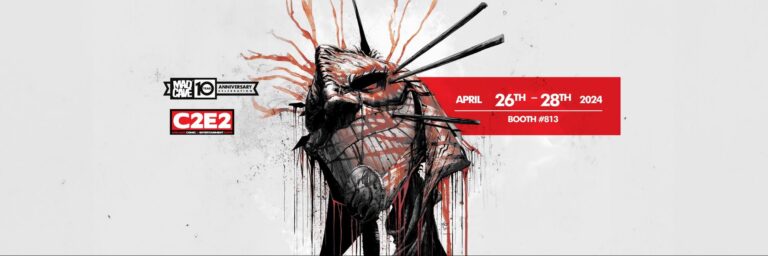
Join Mad Cave Studios at C2E2 2024!
See you soon, Chicago! We’re looking forward to our next adventure in the Midwest, as we head to McCormick Place for C2E2 2024! Join Mad
When the past is dredged up, grab your sword and try again.
Coming in April 2024 is When The Blood Has Dried, the newest fantasy/action drama series written by Irish creator Gary Moloney (Down Below, Fractured Realm) with art by fan-favorite illustrator and RPG creator Daniel Romero Ulloa,
When the journey comes to an end, what’s an adventurer to do? After the mysterious Meabh of Cklonia blows into the the little town of Carraig an Bhun, she eventually finds her place in the town and takes over The Lough Inn… But when her past in The Guild comes knocking at her door, can she protect her peace and learn to accept herself?
Mad Cave Studios’ marketing manager, Maya Lopez, sat down with When The Blood Has Dried creators Gary Moloney and Daniel Romero to chat about their inspirations, their creative process, the making of When The Blood Has Dried, and more! Read on for the full interview!
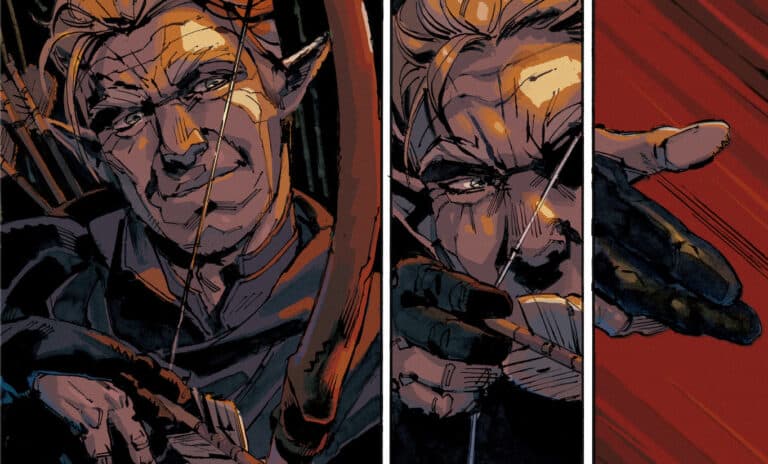
Q: Thank you so much for taking the time to answer our questions today! Can you please tell us a little bit about yourself?
GM: Hey there! I’m Gary Moloney, I’m a lawyer by day, viligante writer by night from Cork, Ireland. I’ve been making comics since 2018 through the Limit Break Comics collective (which I co-founded). Since then, I’ve not only contributed to a number of independent anthologies and work-for-hire projects but I’ve also co-edited Limit Break’s mythology mashup anthologies, Down Below and Fractured Realms. But I’m very excited to be bringing my new creator-owned series, When the Blood has Dried, to Mad Cave Studio with Daniel Romero and Becca Carey coming along for the ride.
DR: I am Daniel Romero, a comic book artist from Chile, based in a small city in the south where rain and cold are almost constant for 10 months of the year. I have been drawing for almost 11 years, during which I have done a lot of fun things. This craft has an incredible ability to keep me happy all the time, so I’m counting on it to stay that way!
Q: In When The Blood Has Dried, we follow the story of Meabh of Cklonia, an adventurer whose past is shrouded in mystery. What was your biggest inspiration in creating this story?
GM: I’ve always been an avid reader of the fantasy genre. Growing up I was just at the right age as Peter Jackson’s Lord of the Rings films came out and to say they became an obsession would be putting it lightly. I went on to read the books, play the video games, and even paint the Games Workshop miniatures! It really was a gateway to the world of epic fantasy and its various sub-genres, a form of storytelling that would go on to define a lot of my early creative endeavors.
Over time though, particularly as I entered my late teens, I grew estranged from the genre and only really rediscovered it when a close friend of mine introduced me to Dungeons & Dragons a few years ago. That gave me a different perspective on high fantasy because it positioned you not as noble warriors given a lofty quest by destiny but as a band of journeymen adventurers trying to make their way in the world. Suddenly it clicked that high fantasy could happen in low places. The stakes didn’t need to be world-shattering for a fantasy story to be considered “epic”. Your characters could engage in morally questionable and often cruel acts but still emerge the “hero” in the eyes of the NPCs. Your misdeeds overlooked or swept under the rug.
That really stuck me and I started to wonder what would a life of “playing” the hero would do to someone when it all came crashing down, as it almost inevitably would. What happens after the adventure ends and you’re left alone to count the cost of all you’ve done?
From that nub of an idea came an image. A retired adventurer tending bar, someone who was ruthless in her day and now just sought to carve out a quiet life for herself. An upending of the traditional fantasy hero by imbuing their tale with the tonal sensibility of a spaghetti western and placing them in the position of the aging gunslinger.
DR: Years ago, I found myself in a period of stumbling between projects, lacking both
ambition and motivation. It was Gary who didn’t want me to waste my time and encouraged me to pitch. We were considering two options, if I recall correctly, but I ultimately decided on ‘When The Blood Has Dried’. The idea of recreating a medieval fantasy world appealed to me because I could infuse it with a touch of romanticism to a period that seemed simpler and more attractive to me.
Additionally, the fact that Gary is from Ireland, a region untouched by the Romans and steeped in Celtic mysticism, further motivated me. Along with the idea of breaking the warrior archetype, distancing it from the noise of war and bloodshed. The back-and-forth between Gary’s ideas and my graphic proposals brought a lot of vitality to our conversations, it was truly stimulating. I believe Gary’s influence is crucial here because I hadn’t encountered a writer whose sensitivity to storytelling was similar to mine.
On the other hand, the story of ‘When The Blood Has Dried’ emerged just after I left architecture school, allowing me to apply everything I had learned. Every detail, from the bar to the monastery, is engraved in my mind. I’ve imagined Carraigh an Buhn and its kind villagers more times than I’ve been able to draw.
Q: Can you tell us a bit about your personal connection to When The Blood Has Dried?
GM: One of the things I wanted to do with When the Blood has Dried was to bring a particular Irish perspective to the high fantasy setting of the book. It’s something that Martin McDonagh and even our variant cover artist, Declan Shalvey, have done in respect of the crime drama and something I wanted to explore here. In the history of the
fantasy genre there has been a tendency to co-opt the language, folklore, and culture of Ireland as set dressing and narrative shorthand. Gaeilge (Ireland’s national language) was sometimes treated a form of discount Elvish to be trotted out as a cheap
worldbuilding tool. So, when the time came to craft the Southern Territories, I wanted to rectify that and give the book a uniquely Irish tone that’s largely absent from a literary landscape which is dominated by the British conception of medieval fantasy. To that
end, you’ll see Ireland reflected in way characters are named and how they speak to each other but moreover in the tone of the setting itself.
Carraig an Bhun, where most of the story takes place, is very much inspired by life in rural Ireland. The community is a friendly and welcoming one, yes, but there’s an asterisk attached to that. There’s a clear split between those who were born and raised there and everyone else. It doesn’t matter how long you’ve lived there, you’re forever considered a “blow-in” by the locals, just waiting one strong breeze to take them away again. While no real harm is meant by those terms, it does mean that where tensions begin to fray within a community that people can very quickly become quite parochial in their attitudes.
That’s a dynamic I saw a lot of growing up and something I wanted to show in Meabh’s relationship with the people of Carraig an Bhun. As the proprietor of the local tavern, she’s core part of their community and the place means the world to her but she’s always somewhat separate from them. That’s the Irish experience both at home and abroad. We are a nation of outsiders.
DR: There are dramatic themes that stir me deeply, but I don’t always want to delve into why, as I’m not always ready for those big questions. It’s a similar impulse to when I see Maximus face off against Commodus in Gladiator; feel Theodore’s heartbreak in Her, or how challenging it was to read Kafka’s Letter to His Father. It was easy for me to project and imbue Meabh with strength, the character who carries the story on her shoulders. She’s broken and trying to move forward with it, what strength indeed. When I had to live alone away from my hometown and family, I made mistakes, especially because I didn’t have a strong character, they weren’t terribly bad things, just noises or echoes, but I have to come to terms with them. I should have hugged my friends tighter, shared more with my dad when I had more time, quit a career I didn’t like before, or not pursued it altogether. I hope these things don’t come back to haunt me one day, and it’s worth mentioning that Meabh hopes for the same.
Now, from a more distant perspective, I have a deep love for small towns and the kindness of rural people. I spent all my summers as a child and teenager in a small town called Carahue. I still vividly remember it: everything was built with wood, there were always cows, horses, and forests in sight. You could walk across the whole town in 15 minutes, and people often wore traditional woolen clothing. Of course, there was also a lot of drinking…
It reminds me a lot of Carrain and Bhun.
Q: What initially got you into comics?
GM: Ireland’s comic scene is a bit different from what your readers in the US would be used to. While we do have that traditional local comic culture, it is much smaller a market than elsewhere with only a handful of shops across the country. Most people will experience comics through their local newsagents whether it be science-fiction
anthologies like 2000AD or gag comics like The Beano. So, while I would later become obsessed with the Panini reprints of Miller and Janson’s Daredevil and the Bendis-Bagley run on Ultimate Spider-Man, my first experience of this would have been a book called Sonic the Comic which featured a certain blue hedgehog in a setting that can only be described as “baby’s first dystopia”. That’s when I began to really attention to comics as a storytelling medium. It was the kind of book that your parents would be happy to pick up for you when getting the shopping but punched far above its weight in terms of its subversive themes of anti-authoritarianism and the quality of the creators involved. They never talked down to their audience, you always felt like you were being treated with respect. To this day, if you ask Irish/UK creators of a certain vintage about their entry point into comics they’ll point to Sonic the Comic as being a foundational reading experience.
DR: This question is a tough one for me because I don’t have a deep and heartfelt story about how I got into comics during my childhood. My passion for drawing was always inclined towards video games; I created characters thinking about how they could fit into a game, without really considering comics as an option, not because I didn’t want to, but because I didn’t know it was possible.
It was around 2012 when I stumbled upon drawing workshops led by a great comic artist named Claudio Muñoz. That’s when I realized I could make money doing comics, which sparked my interest in the medium. I discovered I had some skill in this, as after six months of practice, I was relatively ready to start charging per page (though I admit they were pretty bad at first, but still, I could charge for them!).
The turning point that made me say, “I want to make a living from comics,” was when I completed and published my first project, called The Disease around 2014-2015, alongside another kind Irish writer named James Mulholland. This project made me appreciate the authorial aspect of comics more, rather than just working as a service provider.
Since then, I have been primarily focused on creating and developing my own stories and worlds, and, I hope, with Gary for a long time.
Q: Okay, we have to ask. What’s your favorite character build for D&D?
GM: No matter what system I’m playing in, whether it’s on the tabletop or the computer screen, I tend to favor charisma-based builds. I like the characters that can’t rely on their strength alone to solve their problems but have to look for more creative solutions if they want to get out alive and often have to talk themselves to safety. It’s an approach that really requires you to engage with the role-playing aspect of the game rather than brute forcing your way through the challenges that your Dungeon Master has set for you. I particularly love the idea that you can be facing this demonic creature of chaos, hell-bent on destruction and conquest but with the right words and a lucky dice roll you can avoid the combat altogether. Your intellect, your wit, your cunning: those can be as powerful a tool as your barbarian’s great axe. Whether you win them to your side or, at the very least, convince them you’re not even worth killing, it’s very satisfying and reassuring to think that negotiation and diplomacy can save the day.
DR: I’m almost embarrassed to confess that, although I’ve created plenty of characters for similar things like RPG books and TTRPGs, I’ve never actually played D&D. I hope you’ll forgive me enough to not throw stones until I’ve paid for my crime.
But if I understand correctly, I really like tanks. A melee tank, I love it, preferably a dwarf or an orc. I can’t stand elves, they’re so pretentious. The idea of withstanding a brutal amount of damage with my head held high, I really dig that. Also I’ve always thought that wizards and magic are for weak-willed people. Oh no, I’ve said so much that I think I might make a few enemies, haha. I apologize in advance, but role-playing is quite fun.
Q: Which character from When The Blood Has Dried do you personally connect with the most?
GM: That’s a tough one because I think that as a creator, consciously or not, you’re going to be putting part of yourself into all of your characters and it’s not always going to be the parts of yourself you like either. There’s the temptation to say Meabh because I admire the conviction with which she carries herself in spite of everything she’s been through. Meabh knows that there is a lot of blood on her hands, there are things she’s done in the Guild’s name from which there is just no coming back. Forgiveness is not on the table for Meabh but she’s trying to live a better life nonetheless in hopes of breaking the cycle of violence she found herself in. So instead, she learns to plough on in spite of it and while not on the same scale, I think many of us can relate to living with that type of regret, wishing things could have turned out different but having to find a way to move on in spite of it.
All that being said, I find myself gravitating towards Fergus quite a bit. As the readers will see, Fergus is very much the rock that Meabh relies upon to center herself. While both of our “blow-ins” have to come to Carraig an Bhun to escape their tragic past, Fergus us further along on his journey of reconciliation and often puts Meabh’s needs before his own (even if he wouldn’t ever admit it). I think we’ve all been and leant on that friend at various points in our lives.
DR: This is a really good question because as an artist, I sometimes have to connect more with one character or another to better capture their attitudes and expressions. But if I had to choose a character I feel most connected to right now, I would say, surprisingly, Darius.
Gary and I haven’t had a specific conversation about this, but we have differing opinions about him. In the character description, Darius might just seem like a big jerk. However, I believe he should have had a more complex journey, similar to that of a villain with a positive-negative conversion, like Walter White to Heisenberg. Darius accepted and understood the status quo, and in real life, I’ve met people who love the law beyond their own ends (the difference between Saul Goodman and his brother, for example).
Darius represents everything one could aspire to, is like a connection to your negative side: he’s handsome, has a long life, money, and the backing of the crown. It’s like having the world at his feet. Sometimes, I think about how wonderful a life like his must be. All that he demands in the story isn’t inherently bad; it’s under the power of the crown, he just follows the protocols. Clearly, he’s a jerk, but there are many rules and influences that allow him to be the best of jerks, and that’s the problem. But that’s part of the deception Nicolai lives under, believing in that more noble, positive, and highly ethical power structure, and that’s why I don’t want to blame him for being naive.
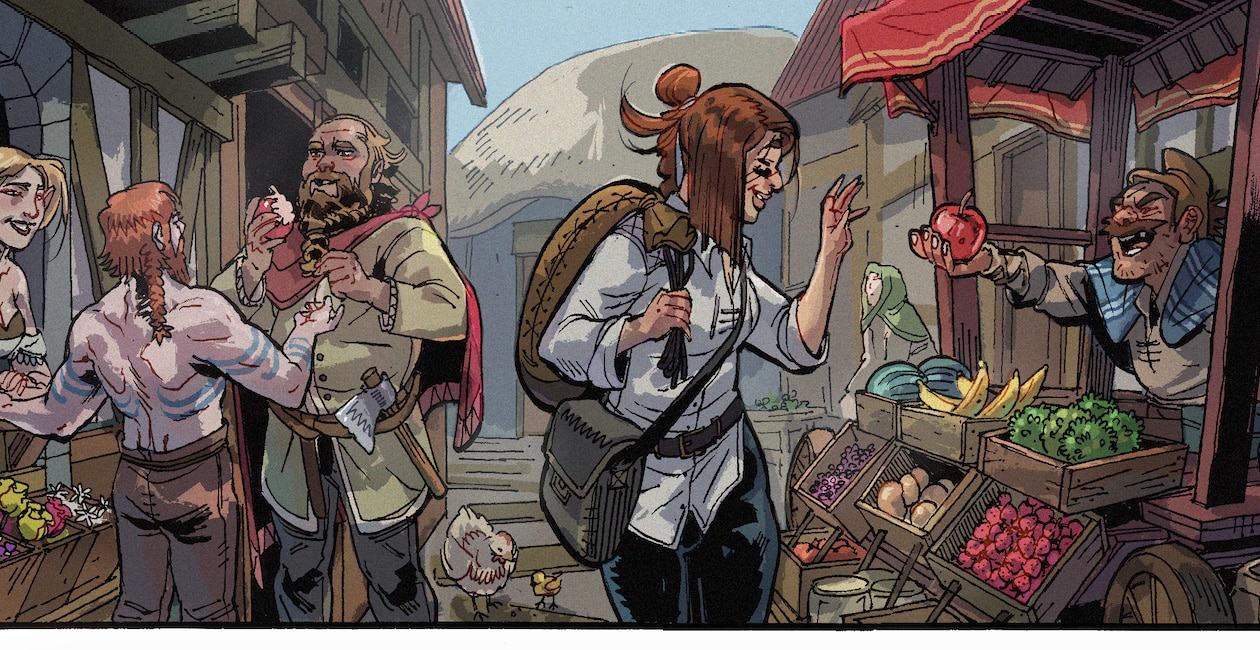
Q: In When The Blood Has Dried, readers are treated to a richly-developed fantasy world filled with vibrant characters. Was there any special research that went into the creation of this series?
GM: You mean other than a lifetime of reading fantasy novels? I certainly revised some of my favorite authors in the genre such as Joe Abercrombie, Andrzej Sapkowski, and Robin Hobb in order to reflect on what I liked about their work. This extended to considering some of the more well-known settings from TTRPGs and video games (Dragon Age, Warhammer, etc) to see what made them tick. I also explored the work of some newer voices that I wasn’t as familiar with, such as N.K. Jemisin, Tamsyn Muir, and Ken Liu, to get some fresh perspective. It’s a hard one to answer because I wouldn’t consider myself a “world-builder” per se. I tend not to be interested so much in the lore as I am the characters and their dynamics. What I was after with When the Blood has Dried was flavour more so than anything else.
That being said, I’m someone who follows geopolitics quite closely and reads extensively on the subject. A lot of that comes down to the study of societal structures and how state violence becomes systematized. On first reading, you might not think there’s a lot of that at play in When the Blood has Dried but if you look closely there are hints here and there as to the wider socio-political context that’s going on in the background. It’s something that informs how the characters act but doesn’t necessarily need to be spelt out to the reader. Meabh and Daris might be pawns on a larger chessboard but they’re also our window into the Southern Territories. I think that’s what grounds the book and gives it that lived-in feel.
DR: Gary provided me with excellent location references, and I want to publicly thank him, as no other writer had gone to such lengths to assist me with references and visuals. Yet, on my own, I have folders upon folders filled with images, illustrations, and cliché phrases to maintain the tone of what I want to convey. Undoubtedly, this work is medieval fantasy with a Celtic inclination. Furthermore, since my focus is not at all historical, I took it more lightly. However, I had to do a lot of research on the various Celtic cultures and what specifically characterized Irish Celtic culture. It was an intense process, especially when trying to characterize the people, as there are not abundant references for something so specific. I also dedicated myself to differentiate them as much as I could, to make the city more unique; it’s very typical to recognize each person in a small town.
Although the city in terms of architecture does not necessarily reflect this Celtic influence, as it is more classical, I made an effort to create my own construction systems to stack wood and give it a coherent internal logic. As for the rest, everything is much more referenced than most would expect. For example, Gary provided me with images from his travels, and on my own, I searched for photos of the most rural areas of my country; they coincide in being quite similar: it’s very cold, rains all year round, there’s a lot of greenery, and lakes abound.
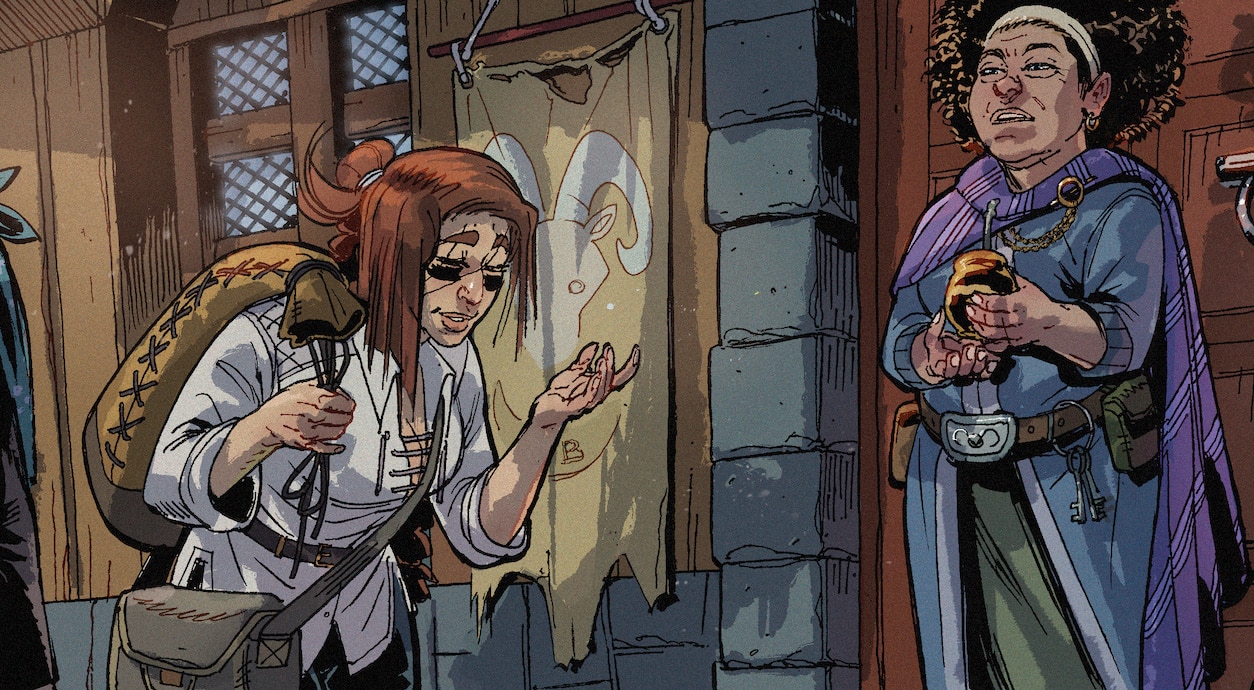
Q: What do you hope for readers to take away from reading When The Blood Has Dried?
GM: Like I said, there’s a lot there for the readers to chew on if they so wish. I’m very interested in cycles of violence and how insidious they can be. When the Blood has Dried grapples with that as the series goes on and we see the toll that Meabh’s opposition to the Guild takes on her and those around her. Ultimately, however, it’s a very intimate and bittersweet story about a woman coming to terms with a life of violence and understanding the price that must be paid for that. Simply put, I want you to carry that weight.
If nothing else, I want them to be asking “who is this Daniel Romero guy and where has he been all my life?” Daniel is truly one of my favourite people in comics and he has knocked it out of the park with this book. I really hope that the series puts him on people’s radars because he absolutely deserves it. So much of what makes When the Blood has Dried special is the quiet moments between the action. Those few pages interspersed throughout the story where Meabh and Fergus are just allowed to have time to reflect and share a pipe or a glass of whiskey. It’s Daniel’s character acting that sells those scenes and gives them the emotional impact they need.
DR: Ah, so far, those who have been able to read WTBHD have grasped the essentials. This isn’;t your typical fantasy story filled with pure action and quick resolution with swords. It’s more about the story that comes after that. So, if you want to immerse yourself in a tavern, mingle with the adorable villagers, smoke a pipe, and have a revitalizing whiskey, this is the best story to do it with! Plus, you’ll get to see how the main characters face the horrors of their decisions when they hit them head-on. In short, I approached every detail with care so that you feel like another character within the story, seated under a candle. I hope readers will closely engage with the issues that haunt Meabh and be able to share all of her emotions. Laugh and suffer with her.
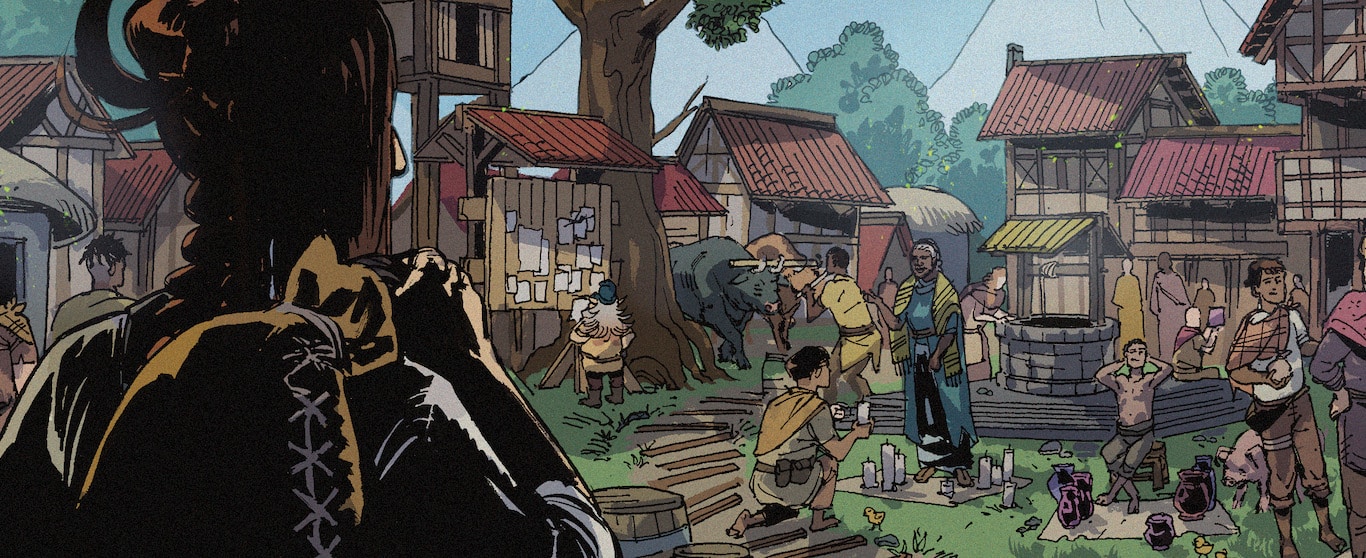
Q: Can you tell us a bit about your creative process?
GM: It usually starts with an image, character, or concept that inspires the tone or vibe of what the story will ultimately become. From there I start a notebook for the project as I’m someone who finds it much easier to work out their ideas on paper. That’s where any notes I make while I’m researching will go as well as plot summaries, character biographies, and scene ideas. There’s an impermanency to it all that I find gives you permission to more freely grapple with the story and its discrete elements. You can make mistakes in the early stages of the process, tease out the bad ideas and then cross them out later if you need to. It’s really liberating and gets me away from the computer, at least for a time.
Once the story is starting to take more shape, I’ll write my outlines and scripts longhand in a rough form before cleaning them up later while I’m transcribing them into a word document. I tend to have a sense at that point about how many panels they’ll be on each page, the intent is behind each panel description, and what the dialogue will be like but its subject to change and invariably those are elements I’ll play around with in the polishing draft. The idea, at the very least, is that by the time its on my computer I’ve done most of the hard work already and I can focus on tidying up what’s already there.
One of the most interesting parts of making comics for me is that the page serves as a singular unit of storytelling and the options that gives you. I find that each page has its own poetic meter or rhythm which you’ll only really figure out in the act of writing as you try to carefully balance the juxtaposition between visuals and dialogue. A page may be perfectly serviceable with five panels, but you’ll know in your heart of hearts that there is something slightly off-key about it. It’s only when you allow yourself hear it that you realise by adding an extra panel and splitting the dialogue across two everything flows much better and has the feel you were going for in the first place. It requires a bit of trial and error at time but I think it’s worth it.
DR: For me, the creation of a piece is a collaborative process between the writer and the artist. It’s important to have that creative freedom without being asymmetrically bound to the other’s will. My creative process begins with a notebook where I jot down all the information, desires, and longings related to the piece.
Then comes the most complex part: transitioning from text to image. To achieve this, I need to be completely tuned in to the emotional state of the scene. Personally, I find it helpful to read the script and visualize the events as vividly as possible. Then, I move on to creatin panels coherent with the flow of the scene, ensuring each composition aligns well with the dialogues. For this, I draw from references from various narrative media, such as books, cinema, or comics.
Once the sketches are ready, the rest of the process becomes an enjoyable experience. The hardest part is already done. However, I consider the second challenge arises when working on the colors. This is where the responsibility lies in recreating an atmosphere within a color context, whether it’s a sunrise, a sunset, or an indoor setting, to name a few. This involves distinguishing the subtleties of light and color to convey the appropriate atmosphere and sensation within a color symbology, I mean, I don’t make the sky blue just because it’s blue, but because I seek to represent something with that blue…
Q: Who/what are your biggest influences as a creator?
GM: I read a lot of manga growing up and that definitely informed quite a bit of my storytelling preferences in terms of action and pacing. You obviously have to be alive to the differences in format but there something about Naoki Urasawa’s Monster, Kentaro Miura’s Berserk or Hiromu Arakawa’s Fullmetal Alchemist where you’re given time to sit with these characters and ruminate on their decisions. It’s presence in the collaborations between Ed Brubaker and Sean Phillips too. Not just silent reaction panels but pages where you allow impact of a particular beat to sink in. That’s something I try to do in my own stories within the confines of whatever page count I’m given.
I’m a craft junkie at heart and I like studying different techniques and structures to see how I can experiment with them in my own work. It always has to be in service of the story but if there is an opportunity to play around with the form then I’ll take it. Matt Fraction’s work has been an influence in that sense because while I could never do what he does, I appreciate that he’s constantly pushing himself to do something new and interesting.
DR: I’ll try to keep this response within the scope of WTBHD because this could make it the longest answer. Titles like Skyrim, Zelda, Hollow Knight, and Valheim are a constant stream of ideas that fuel my creativity. As for artists, I often review the work of names like James Harren, Miki Montllo, Inimitiel, Hugo Pratt, Leo Cherel, Sean Murphy, Ryōko Kui, and Hiromu Arakawa. I look at mangaka more often but I find it more complex to remember the names, however, These authors are a constant source of inspiration and solve all my artistic doubts.
Nevertheless, my aspiration is to develop a style like Bryan Lee O’Malley’s and be able to tell stories of everyday life, urban fantasy, and romantic themes, but for now, I’m enjoying what I’m doing a lot.
Q: What are your favorite stories/artists/genres?
GM: I’m an omnivore when it comes to story but espionage, crime, fantasy, and sci-fi tend to rank highly. I’ve also been known to be partial to the odd courtroom drama. Looking at my bookshelves, John le Carré, Dan Abnett, Gail Simone, Devin Grayson, Antony
Johnston, Elmore Leonard, and Jim Butcher all feature heavily. To my mind though Joe Abercrombie’s First Law series is the benchmark when it comes modern fantasy novels. For comic artists, we honestly could be here all day, but the one’s that immediately spring to mind are Dan Mora, Stan Sakai, Mark Bagley, John Romita Jr, Denys Cowan, Stephanie Hans, Tula Lotay, David Lloyd, Becky Cloonan, and Erica D’Urso. It would be remiss of me not to mention some of the great working artists and colourists based in Ireland such as Tríona Farrell, Chris O’Halloran, Ellie Wright, Dee Cunniffe, Rapha Lobosco, Nate Stockman, Nick Roche, Kevin Keane, Stephen Mooney, David O’Sullivan, Danny Earls, Colin Craker, John McGuinness, and Colm Griffin.
DR: Oh, what a fun question, let’s see if I can summarize. I have a weakness for the everyday and romantic literature; the more exciting and romantic, the better for me. When it comes to movies, Her, 5 Centimeters Per Second, and The Garden of Words broke my heart. As for books, I really enjoy classics like Romeo and Juliet, Les Misérables, and the works of Jane Austen. One Hundred Years of Solitude was a reading that deeply marked me and made me realize my love for reading, although I am far from being an avid reader. When it comes to manga, I adore works like Fullmetal Alchemist, Attack on Titan, and Dungeon Meshi, as well as anime like Mushoku Tensei or Hajime no Ippo. Currently, I’m reading Dragon Ball and trying to catch up with One Piece, although it’s hard work.
Additionally, there are some things I tend to revisit constantly, like Breaking Bad,
Fullmetal Alchemist, or Gladiator, and the comic series Locke and Key… okay, I think I have a mix of things I really like.
Q: Any upcoming projects we should know about?
GM: Other than When the Blood has Dried, my main focus at the moment is on Limit Break’s latest mythology mashup, Wish Upon a Star, which reinterprets classical fairy tales through a science-fiction lens. Myself and my fellow co-editor, Paul Carroll, have just announced the creative teams involved following a very competitive open submissions process. That’ll be coming to Kickstarter in March. Besides that there’s nothing I can say publicly, I’m always tinkering away on something new though, my brain doesn’t let me sit still for too long before another story starts to form!
DR: With Gary, we’re cooking up something new because I’m close to finishing WTBHD and we don’t want to lose time. However, I don’t want to make empty promises at the moment. What I can say is that there will be more projects in the future. We’re committed to continue exploring ideas and working together, so you can expect more from Moloney and Romero in the near future.
Q: Any cons you’ll be attending in the near future?
GM: Definitely, I’m at Dublin Comic Con’s Spring Edition on the 9th and 10th of March where I’ll be taking part in several panels and talking about my experience as someone who has transitioned from working primarily in small press to releasing a book with a mainstream publisher. But I’ll also be making my first trip to NYCC in October followed by my annual pilgrimage to the UK for Thought Bubble in November (where we hope to launch Wish Upon a Star). I’m sure there’ll be a few more events added to the mix before all is said and done.
DR: A couple of days ago, I got my passport, and I already have a date to apply for the visa. I’m eager to buy the ticket since I have all my hopes set on going to NYCC.
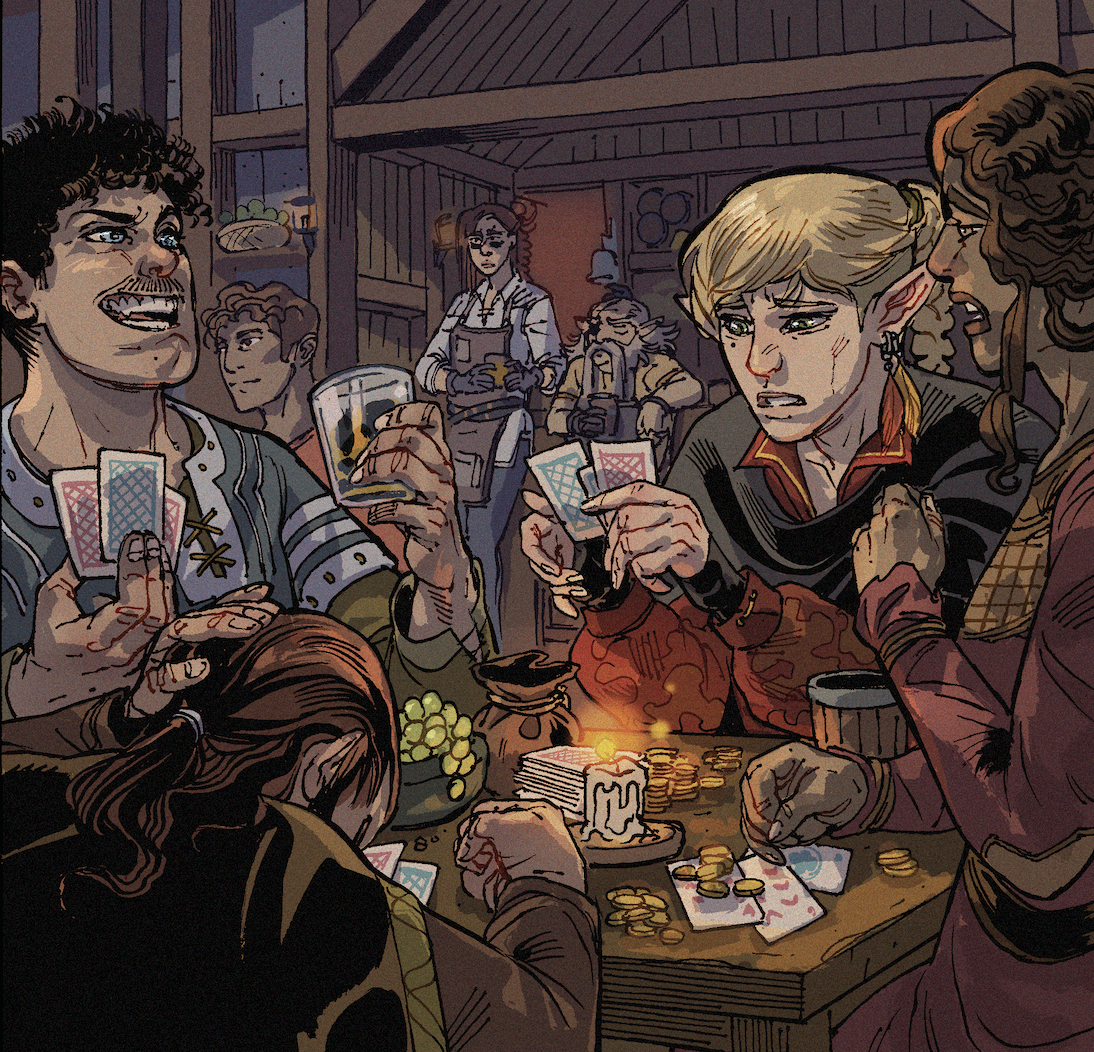
Q: Anything else you’d like to share?
GM: I’d just like to thank Mike, James, and all the crew over at Mad Cave for their trust and support on this project. Their dedication and commitment to fostering new talent in the comic book industry is second to none and we simply could not have asked for better collaborators than them. When the Blood has Dried is a book that we’re all incredibly proud of and we’re especially honored to be launching it as part of Mad Cave’s tenth anniversary. I think that shows on the page and we can’t wait to share it with readers on 10th April. If the idea of a moody western accented by swords and sorcery piques your interest, then this is the series for you.
DR: Well, yes, two things. First of all, sometimes James’ work, the editor, remains very much in the background, and the truth is that he’s the one who has made everything flow so admirably. He’s always looking out for us, making sure we have enough time, that everything looks good, and that there are no issues. He always responds to our questions and has incredible charisma. It’s impossible to deny him anything.
Secondly, I want to thank the kind reader, who is the most important part in the creation of a work. Without them, stories wouldn’t make sense, as there wouldn’t be anyone to share with what crosses our minds.
Writer, Gary Moloney (He/Him)
Gary Moloney is a comic writer from Cork, Ireland, and co-founder of the Limit Break Comics collective. Gary writes across multiple genres, acting as co-editor on the mythology mashup anthologies, Down Below and Fractured Realms. When he’s not obsessing over the morphology of the Irish language or the political dystopia we seem headed towards, Gary can usually be found on the water, windsurfing until the frostbite sets in.
Artist, Daniel Romeo (He/Him)
Daniel is a 27 years old artist born in the cold lands of southern Chile. He started working as a comic book artist and illustrator at the age of 17. Beyond pursuing a career as a professional comic artist, he could say art chose him.
When The Blood Has Dried #1 is now available for pre-order on the official Mad Cave Studios website, and will be available at your favorite bookstore, local comic shop, and digital comic reader on April 10th, 2024!
Share:

See you soon, Chicago! We’re looking forward to our next adventure in the Midwest, as we head to McCormick Place for C2E2 2024! Join Mad
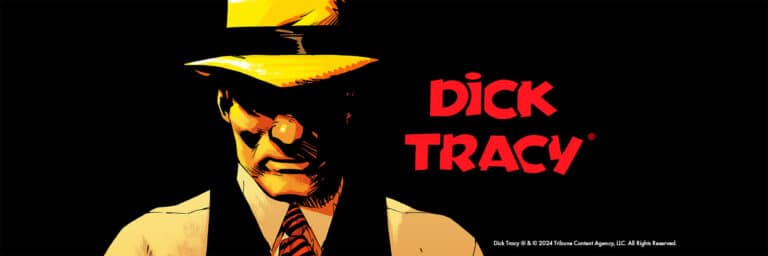
For over 90 years, the evolution of Chester Gould’s detective DICK TRACY has gone from comic strip to a radio show and merchandise, all the
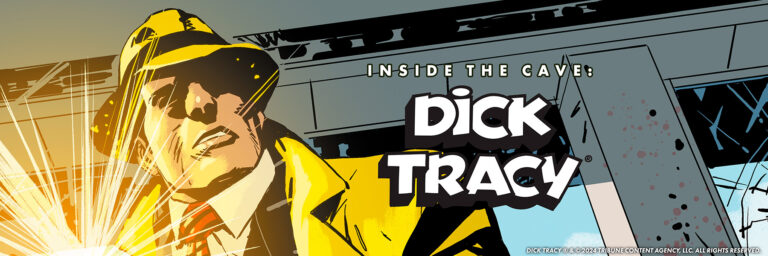
The square-jawed crimestopper is back for all new adventures and a super sly takeover of nostalgia! The iconic Dick Tracy returns in this series debut
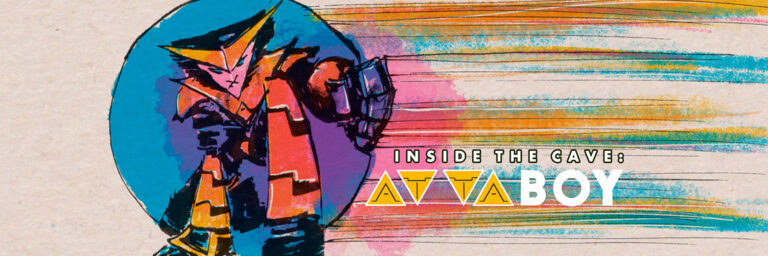
Boy robots. Fallen fathers. Evil motherboards. Do we ever stop playing the games we played as children? Coming in May 2024 is the newest original
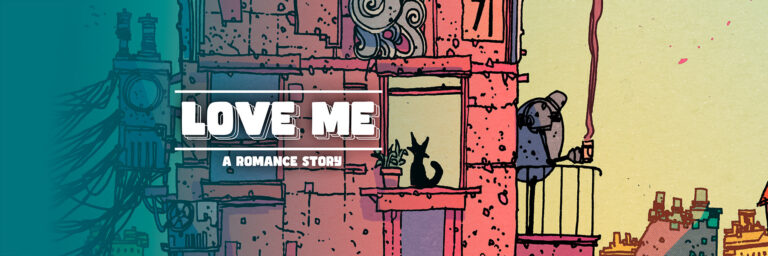
Love is a battlefield! In the bustling streets of New York City, sometime in the far future, robots like JoJo have taken on everyday jobs.
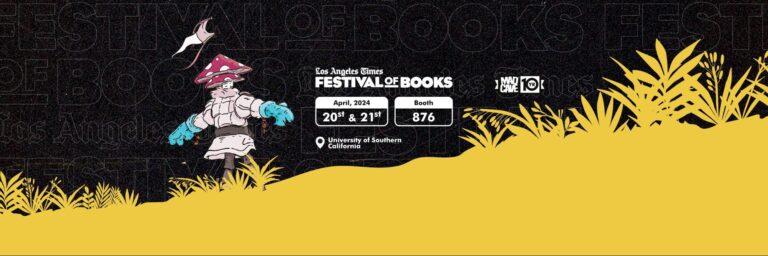
Get ready for a weekend filled with great reads! We’re thrilled to announce that we’re headed to sunny Los Angeles to celebrate the Los Angeles